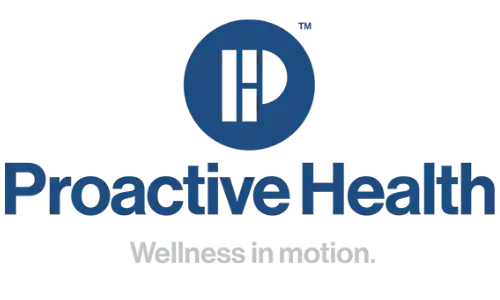Cardiovascular Physiotherapy in the Treatment of Conditions Including Myocardial Infarction
Introduction to Cardiovascular Physiotherapy
Cardiovascular physiotherapy is a specialized branch of physiotherapy focused on improving heart health, especially after cardiovascular events such as myocardial infarctions. This therapy plays a critical role in both the immediate recovery and long-term health of patients who have experienced heart-related illnesses.
Defining Cardiovascular Physiotherapy
Cardiovascular physiotherapy involves tailored exercises and therapeutic techniques that enhance cardiovascular function and endurance. These interventions help patients regain strength and improve their heart’s performance following cardiac events.
Benefits for Cardiac Recovery
The benefits of cardiovascular physiotherapy are vast, including:
- Improved cardiac output: Enhancing the heart’s efficiency in pumping blood.
- Increased endurance and strength: Gradually building up physical capabilities and overall stamina.
- Better quality of life: Through personalized exercise plans that promote health and well-being.
Understanding Myocardial Infarction
What is Myocardial Infarction?
A myocardial infarction, commonly known as a heart attack, occurs when blood flow to a part of the heart is blocked for a long enough period to cause damage to the heart muscle. This serious health event demands immediate medical attention and comprehensive post-recovery care.
Medical Definition and Causes
Myocardial infarction is primarily caused by:
- Plaque buildup: Leading to narrowed coronary arteries.
- Blood clot formation: Blocking the artery and restricting blood flow to the heart muscle.
Symptoms and Early Warning Signs
Recognizing the early signs of myocardial infarction can be lifesaving. Key symptoms include:
- Chest pain or discomfort
- Shortness of breath
- Nausea and cold sweats
Diagnostic Approaches
Role of ECG in Diagnosis
An Electrocardiogram (ECG) is crucial in the diagnosis of myocardial infarction. It records the heart’s electrical activity and can show abnormalities caused by a heart attack.
Other Diagnostic Tools
Additional tools include:
- Blood tests: To detect enzymes that leak from the damaged heart muscle.
- Echocardiogram: To visualize the heart’s motion and structure.
Integrating Physiotherapy into the recovery process after a myocardial
Role of Physiotherapy Post-Myocardial Infarction
Immediate Physiotherapy Goals
Stabilization and Early Mobilization
Immediately after a myocardial infarction, the primary goals of physiotherapy are to stabilize the patient’s condition and begin early mobilization. This includes gentle exercises to maintain joint flexibility, prevent muscle atrophy, and enhance circulatory efficiency. These early movements are crucial for improving prognosis and encouraging a quicker return to daily activities.
Managing Acute Symptoms
Physiotherapists also focus on managing acute symptoms such as pain and discomfort. Techniques like guided breathing exercises and gentle cardiovascular conditioning can help alleviate chest pain and improve breathing efficiency, which is vital in the early stages of recovery.
Long-Term Physiotherapy Strategies
Improving Cardiac Function and Endurance
Over the long term, physiotherapy aims to strengthen the heart and improve endurance. This is achieved through gradually increased exercise intensity to build up cardiovascular fitness without straining the heart, thus enhancing the patient’s stamina and overall cardiac health.
Techniques for Sustained Recovery
For sustained recovery, physiotherapists employ a combination of strength training, endurance exercises, and flexibility routines. These techniques are designed to help the patient regain full function and prevent future cardiac issues, contributing to a healthier lifestyle.
Treatment Techniques in Cardiovascular Physiotherapy
Manual Therapy Techniques
Specific Exercises and Manipulations
Manual therapy in cardiovascular physiotherapy involves specific exercises and manipulations that help improve blood circulation and heart function. These may include massages and structured movements that target the areas around the heart to increase blood flow and reduce stress on the cardiac muscles.
Use of Technology in Treatment
Virtual Reality and Other Innovations
The use of cutting-edge technologies such as virtual reality (VR) enhances traditional physiotherapy techniques. VR platforms can simulate walking and jogging scenarios that encourage patients to engage in physical activities in a controlled and safe environment, making the recovery process more engaging and efficient.
Collaborative Care Approaches
Integrating Physiotherapy with Medical Treatments
Working with Cardiologists and Other Specialists
Physiotherapists often collaborate with cardiologists and other healthcare specialists to ensure a cohesive treatment plan. This integrated approach ensures that all aspects of the patient’s health are addressed, from medication management to physical rehabilitation, providing a holistic care pathway.
Patient Education and Self-Management
Empowering Patients for Home-Based Care
A significant aspect of cardiovascular physiotherapy is educating patients on managing their condition at home. This includes training in self-monitoring techniques, lifestyle changes, and exercises that can be performed independently. Empowering patients for self-care is crucial for long-term success and encourages adherence to healthy behaviors that contribute to cardiac health.
Advancements in Cardiovascular Physiotherapy
Latest Research and Developments
New Techniques and Their Efficacy
Recent research in cardiovascular physiotherapy has led to the development of innovative techniques designed to enhance recovery after myocardial infarction. These include personalized exercise programs that are tailored to the specific needs of each patient, integrating real-time data monitoring to adjust treatments dynamically. Studies have shown that such personalized approaches can significantly improve cardiac function and patient outcomes.
Future Trends in Physiotherapy for Cardiac Patients
Predictions and Emerging Focus Areas
The future of cardiovascular physiotherapy is expected to focus more on technology integration, such as the use of wearable devices to monitor heart rate and physical activity in real-time. Another emerging area is the application of telehealth services, allowing patients to receive guidance and supervision remotely, increasing the accessibility of specialized care. These advancements are predicted to enhance patient engagement and adherence to prescribed rehabilitation programs.
FAQs on Cardiovascular Physiotherapy and Myocardial Infarction
What is the rehabilitation process for myocardial infarction patients?
The rehabilitation process for myocardial infarction patients typically involves a phased approach:
- Initial Assessment: Evaluating the patient’s physical condition, cardiac function, and overall health.
- Early Mobilization: Gentle activities initiated soon after the infarction to enhance circulatory health.
- Structured Rehabilitation: Personalized exercise programs designed to gradually build strength, endurance, and cardiac efficiency.
- Ongoing Maintenance: Long-term strategies to maintain heart health and prevent future cardiac events.
What exercises are recommended for myocardial infarction recovery?
Recommended exercises for myocardial infarction recovery include:
- Walking: Starts with light walking, gradually increasing the pace and distance as recovery progresses.
- Cycling: Stationary biking at a comfortable pace to build endurance without excessive strain.
- Strength Training: Light weights or resistance bands to improve muscle tone and support cardiac function.
- Stretching: Regular flexibility exercises to maintain muscle elasticity and joint mobility.
How does physiotherapy help cardiac patients?
Physiotherapy helps cardiac patients by:
- Improving Cardiovascular Health: Through tailored exercise regimens that strengthen the heart and improve circulation.
- Reducing Symptoms: Alleviating pain, fatigue, and breathlessness associated with heart conditions.
- Enhancing Quality of Life: Enabling patients to return to daily activities and improve their overall physical fitness.
- Preventing Complications: Helping to manage risk factors and prevent recurrent cardiac events.
What are the standard therapies for myocardial infarction?
Standard therapies for myocardial infarction include:
- Medications: To manage heart function, blood pressure, and cholesterol levels.
- Lifestyle Changes: Dietary modifications, smoking cessation, and stress management.
- Cardiac Rehabilitation: Structured exercise programs and education on heart health.
- Monitoring and Follow-Up: Regular check-ups to monitor heart health and adjust treatments as needed.
For personalized care and the latest in diagnostic tools in physiotherapy, consider booking an appointment with Proactive Health. Our comprehensive services include Physiotherapy, Registered Massage Therapy, Kinesiology, Fascial Stretch Therapy, Active Rehab, and Bodyworker sessions.



